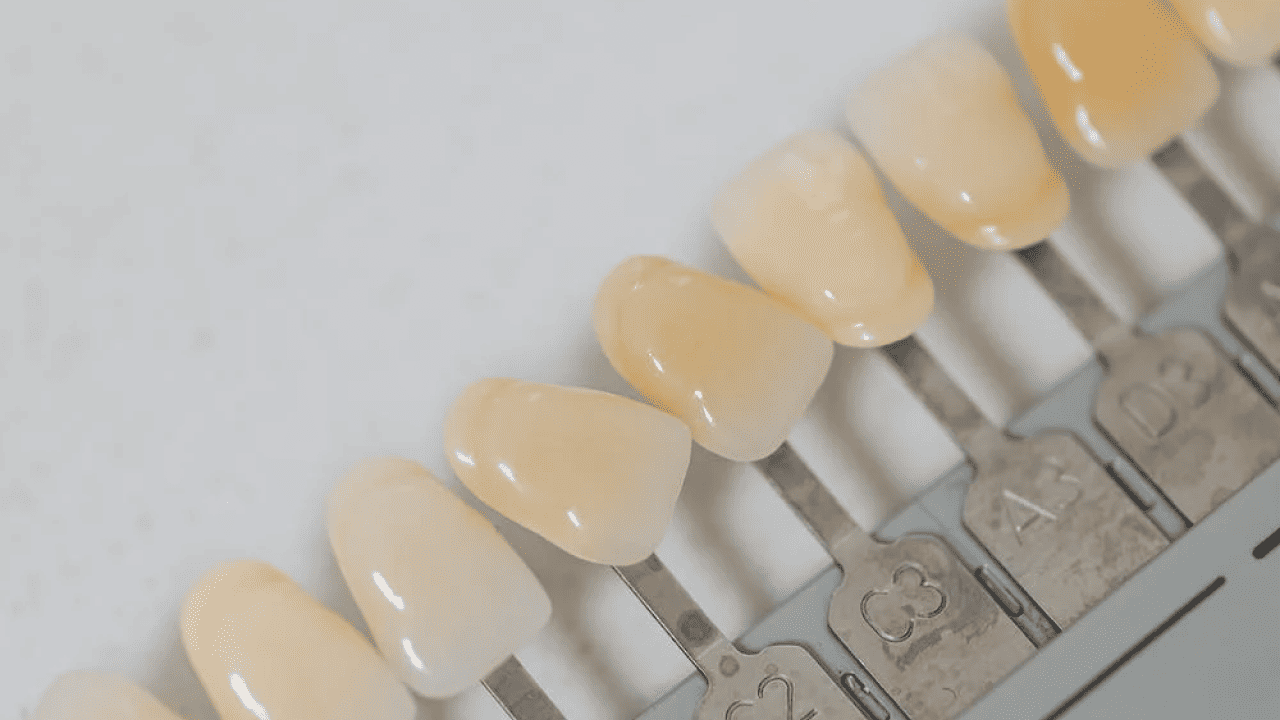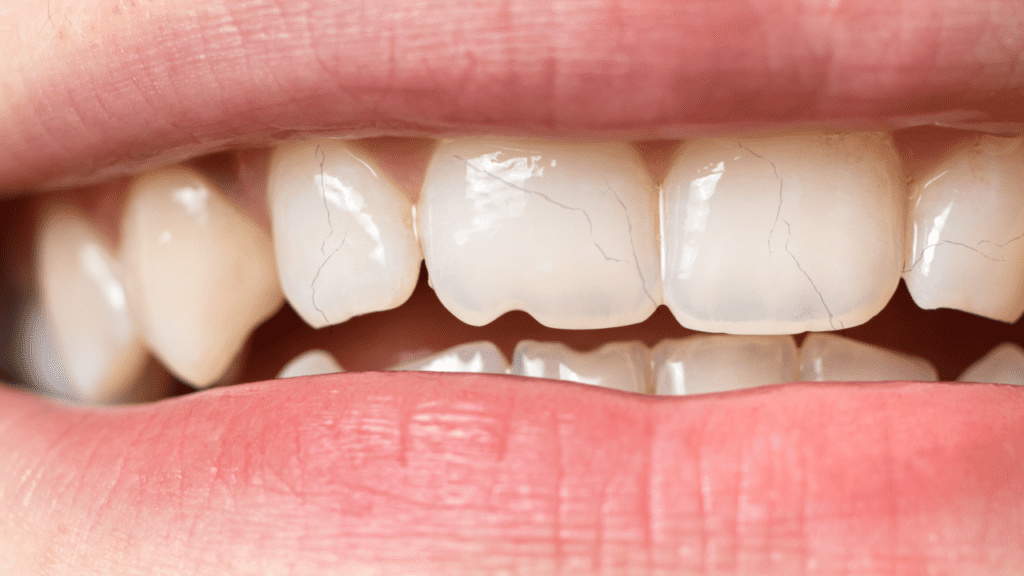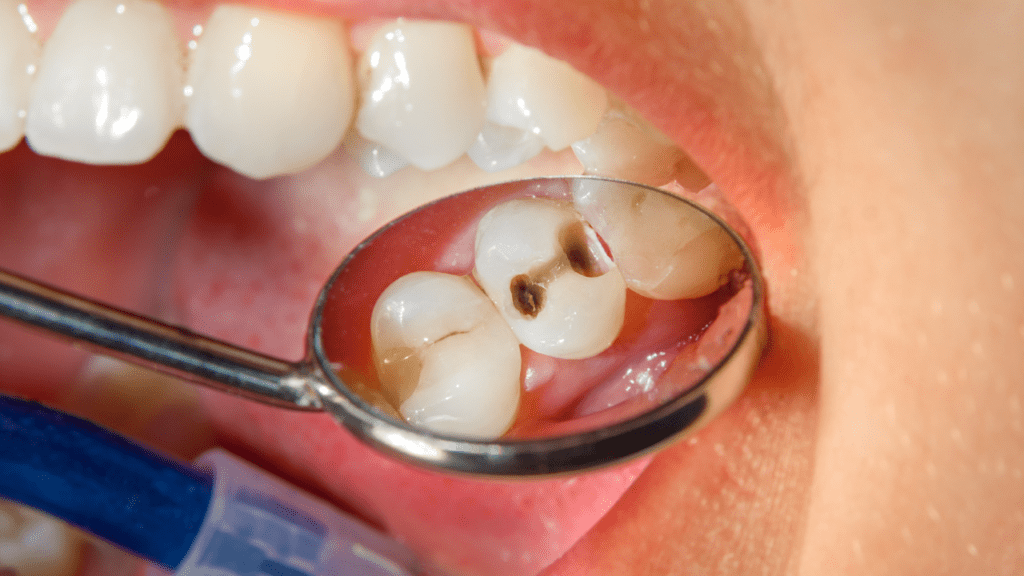If you’ve ever noticed an unexpected orange tinge on your teeth while brushing, you’re not alone. This phenomenon, known as “orange plaque on teeth,” can be both puzzling and concerning. In this article, we’ll delve into the reasons behind this peculiar occurrence, ways to remove orange plaque, preventive measures, and the significance of tooth stains. So, let’s embark on this journey to uncover the secrets behind those orange hues!
What is causing the plaque to turn orange?
The appearance of orange plaque on teeth can be attributed to several factors, and one of the primary culprits is smoking or chewing tobacco. The nicotine and tar present in these products can cause stubborn stains on teeth, often taking on an orange hue. Additionally, certain beverages like red wine, tea, and coffee contain chromogens, which are pigment-producing substances that cling to dental plaque, contributing to the orange tint.
But smoking and beverages aren’t the only villains here. Poor oral hygiene habits can also lead to the accumulation of plaque, which can take on an orange color due to the presence of bacteria and debris in the mouth. If plaque is not regularly removed through brushing and flossing, it can harden into tartar, a mineralized form that retains stains and discolorations.
How do you remove orange plaque from teeth?
When facing the challenge of orange plaque, the good news is that it’s not entirely irreversible. Proper oral hygiene and regular dental check-ups are key to combating this issue. Regular brushing and flossing can help remove surface stains caused by chromogens, while professional dental cleaning can tackle more stubborn stains caused by tobacco use.
For home remedies, consider using baking soda or hydrogen peroxide to gently scrub away surface stains. Baking soda acts as a mild abrasive that can help lift stains, while hydrogen peroxide has natural bleaching properties. However, it’s essential to exercise caution and avoid excessive scrubbing, as it could lead to enamel erosion. Always consult your dentist for personalized advice and safe cleaning methods.
For more stubborn stains or cases where home remedies don’t yield satisfactory results, a professional teeth cleaning is recommended to remove tedious stains that need specialized instruments and materials. A professional whitening treatment may be recommended by your dentist. These treatments use specialized bleaching agents to remove deep-seated stains and restore the natural color of your teeth.
How to prevent orange plaque
Prevention is the best medicine, and this holds true for orange plaque as well. Here are some effective strategies to keep those pesky stains at bay:
Limit Stain-Causing Foods and Beverages
Moderation is key when consuming foods and drinks that lead to staining. Cutting back on tobacco, coffee, tea, and red wine can make a significant difference.
Brush and Floss Regularly
Adhering to a consistent oral hygiene routine is crucial. Brushing twice a day and flossing once a day can help prevent plaque buildup, reducing the chances of stains taking hold. Brushing near the gum line is imperative because this is where a majority of orange stains sit when there are poor oral hygiene habits.
Rinse After Consuming Staining Substances
If you indulge in stain-causing beverages or foods, swish your mouth with water afterward to minimize their impact on your teeth.
Use a Straw
When drinking beverages that can cause staining, use a straw to direct the liquid past the front of your teeth, reducing contact with your enamel.
Chew Sugar-Free Gum
Chewing sugar-free gum stimulates saliva production, which helps neutralize acid and wash away harmful substances from your teeth.
Regular Dental Check-ups
Don’t skip your dental appointments. Your dentist can identify early signs of staining and provide personalized advice on maintaining good oral health.
Is orange plaque bad?
Orange plaque on teeth might be unsightly, but is it harmful? While it’s not a direct threat to your oral health, it serves as a warning sign. Stains are often indicative of poor oral hygiene practices and can be a precursor to more severe dental issues if not addressed.
Moreover, tobacco use, which is one of the primary culprits behind orange plaque, can lead to more significant problems such as gum disease, tooth decay, and oral cancer. Therefore, the presence of orange plaque should serve as a wake-up call to take better care of your teeth and overall oral health.
What orange plaque is not
Despite its alarming appearance, orange plaque is not the same as tartar. Plaque is a sticky, colorless film of bacteria that forms on teeth and gums, while tartar is a hardened and mineralized form of plaque that has not been removed. The orange color in plaque primarily comes from external factors like smoking or consuming pigmented foods and drinks, whereas tartar retains its yellow or brownish color regardless of external influences.
Understanding the distinction between plaque and tartar is essential, as they require different approaches for removal and prevention.
What is the difference between plaque and tartar?
Plaque and tartar are both dental nuisances, but their characteristics and implications are distinct:
Plaque
As mentioned earlier, plaque is a sticky, colorless film that continuously forms on teeth. It contains bacteria that feed on the sugars in the foods we eat, producing acids that attack tooth enamel and cause cavities. Regular brushing and flossing can prevent plaque from hardening into tartar.
Tartar
When plaque is not adequately removed, it can calcify and turn into tartar, which is a hard, yellowish or brownish deposit that adheres to teeth. Tartar cannot be removed through regular brushing and flossing and requires professional dental cleaning to get rid of it.
Tartar poses more significant problems than plaque as it provides a rough surface for additional plaque buildup, increasing the risk of gum disease and cavities. Moreover, tartar can only be effectively removed by a dental professional using specialized tools during a process called scaling.
What Does The Color Of The Tooth Stain Mean?
Tooth stains come in various colors, and each hue provides insight into the underlying cause:
Orange Stains
As we’ve already discussed, orange stains are commonly caused by smoking or tobacco use, as well as consumption of certain beverages like coffee, tea, and red wine. These stains may be superficial and can often be addressed through lifestyle changes and proper oral hygiene.
Yellow Stain
Yellow stains are widespread and typically caused by pigmented foods, drinks, and poor oral hygiene. As plaque accumulates and thickens, it takes on a yellowish appearance. Addressing yellow stains involves adopting a robust oral care routine and limiting stain-causing substances.
Green Stain
Green stains on teeth are less common but can occur due to the presence of fungi, bacteria, or a side effect of specific medications. If you notice green stains, consult your dentist for a proper diagnosis and treatment plan.
Blue Stain
Blue stains are quite rare and are often caused by an excessive intake of metallic compounds. These compounds can be found in certain medications or industrial materials. If you suspect blue stains on your teeth, seek professional dental advice immediately.
Brown Stains
Brown stains can arise from various sources, such as smoking, poor oral hygiene, or certain medications. They may also be linked to excessive consumption of tea, coffee, or wine. Addressing brown stains involves a combination of lifestyle changes and professional dental care.
Gray Stains
Gray stains can occur due to a variety of factors, including certain medications, metals, or excessive fluoride intake during tooth development. If you observe gray stains, consult your dentist for a comprehensive evaluation and to determine the cause of the discoloration.
White Stains
While white stains might sound harmless, they can be indicative of dental fluorosis, a condition caused by excessive fluoride intake during tooth development. Fluoride is essential for dental health, but too much of it can lead to white spots or streaks on the teeth. In mild cases, these stains may not be noticeable, but severe fluorosis can result in more prominent and unsightly marks.
Treatment for white stains caused by dental fluorosis varies depending on the severity. Mild cases may benefit from cosmetic treatments such as dental bonding or veneers to improve the appearance of the affected teeth. For more severe cases, your dentist may recommend microabrasion, a procedure that removes a thin layer of enamel to diminish the appearance of the stains.
White stains may also just be harmless developmental enamel defects that occur when the tooth is forming under the gums. Most white stains are simply monitored to make sure they are not early indicators of cavities.
Conclusion
Orange plaque on teeth can be a perplexing issue, but with the right knowledge and care, you can tackle it effectively. Understanding the causes of orange plaque, such as smoking, consuming pigmented foods, and inadequate oral hygiene, can empower you to make positive changes in your lifestyle.
Remember, prevention is the key to maintaining a healthy, bright smile. By following a consistent oral hygiene routine, avoiding stain-causing substances, and attending regular dental check-ups, you can keep dental plaque and stains at bay. Moreover, being aware of the different types of tooth stains and their potential causes can help you identify any issues early on and seek professional advice if needed.
Cleveland Clinic
PubMed
Dental plaque as a biofilm and a microbial community – implications for health and disease
University of Florida Health
Related Articles
White Spots On Teeth: Causes + Treatment
How to Use Crest White Strips The Right Way
Cavity Vs Stain: How To Tell The Difference + Treatment and Prevention
Erica Anand is a certified dental expert. She holds a BA in Chemistry and a Doctorate of Dental Surgery from Stony Brook University. After completing a two-year pediatric dentistry program, she now runs a private practice focusing on preventive dentistry and is a member of the American Association of Dental Consultants.
Marcus Ramsey has been a professional writer for over seven years. He has talked about and produced content for industries like Dentistry, Healthcare, and more.






